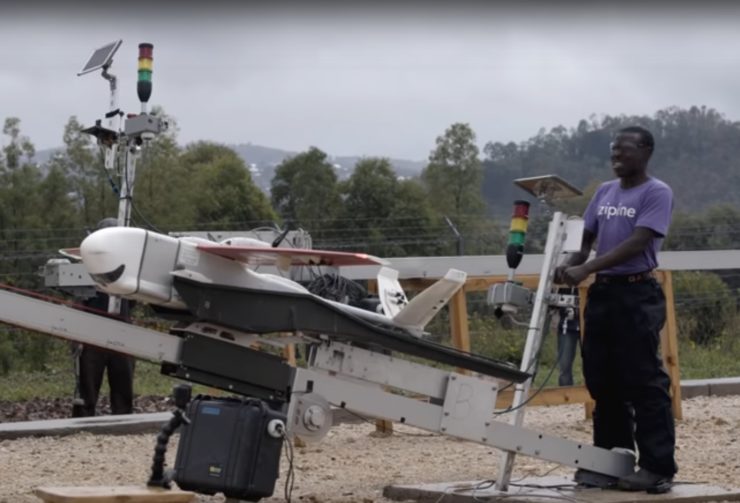
Local laws are very strict about how you can fly drones. In most cases, they have to be flown within the operator’s line of sight and operators are only allowed to oversee one drone at a time. There is no arguing that safety is important, but these extreme regulations are sometimes limiting how much drones can do for us. Drones can help with a number of dangerous and tedious jobs. For example, drones can be flown over radiated areas to analyze the ground and inspect power lines without someone having to climb up a pole. Drones can also be used to continuously scan areas without humans having to fly over in an aircraft.
Rwanda has been making the most of these drone assisted benefits. The country has a mountainous countryside which is difficult to access. Rural hospitals are hard-pressed to supply enough blood to mothers who are in labor, as well as other patients in need. The government also suffers from logistic problems when it comes to storage. However, help has been brought in from California, USA to help Rwanda with some of theses issues. Zipline is a California drone startup which started off with blood deliveries and evolved into a drone delivery company which is capable of serving entire countries.
Rwanda is building on the services provided by Zipline. The benefits of the partnership with Zipline quickly became apparent and the government of Rwanda responded by partnering with the World Economic Forum with the aim of creating a wider network of unmanned aerial vehicles. The program hopes to expand on the range of benefits that the Rwandan people can enjoy from using drones.
One of the Rwandan government’s greatest contributions to their drone program was providing access to airspace. They are implementing a performance-based regulation system which allows drone manufacturers and companies to test their drones as long as they can prove that they are up to the required safety standards. This puts Rwanda ahead of other countries because getting access to airspace in Europe and America is difficult.
Airspace in Rwanda can be accessed by drones for specific missions. The government still provides oversight on safety requirements and the operators only have to detail how they will stick to the regulations. The regulations remain flexible because the government realizes that flexible regulations are the only way to keep up with the ever changing technology. The rate of certification in most countries is so slow that companies have new versions of drones that they want to test before approval for first one has even cleared.
Other countries can learn from how Rwanda is handling drone regulations. Tanzania, for example, was so impressed by how Rwanda does things that they are looking to replicate the system. The Kenyan government is also keen to implement the same flexible and scaleable regulatory framework for drones that Rwanda does.
|